As the sun rises over the rugged landscapes of Arequipa, Peru, a hidden path reveals itself, winding its way through the heart of ancient history and natural wonders.
This path, known as the Route of the Sillar and Petroglyphs of Culebrillas, is like a map leading intrepid travelers on a journey of discovery. It is a trail that unravels the secrets of the past, where visitors can witness the birthplace of sillar, a white volcanic rock that has shaped the grandeur of Arequipa’s iconic buildings.
But the wonders do not stop there. The route beckons adventurers further, promising a glimpse into the enigmatic petroglyphs left behind by the ancient Wari culture, etched into the canyon walls of Culebrillas.
With each step, the allure of the unknown grows stronger, enticing those who dare to follow its path and uncover the mysteries that lie ahead.
Good To Know
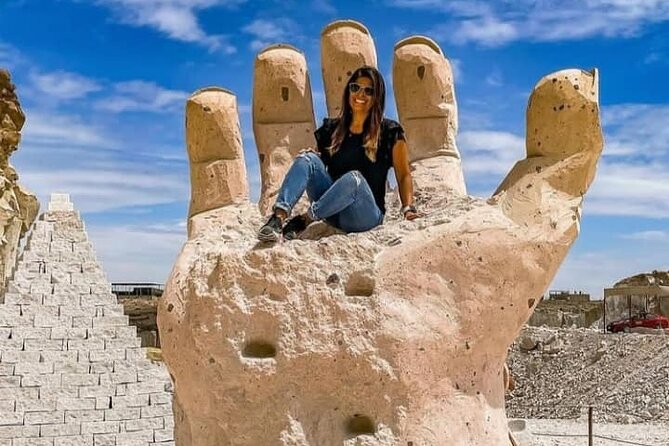
- The Route of the Sillar is a tourist route with historical and cultural significance, visiting quarries and areas where the sillar originated.
- The Añashuayco Quarry is the first stop, where visitors can see the currently operational quarry and the Megatallado of the Church of the Society of Jesus.
- Stonecutters at the quarry can explain their daily work, and visitors have the opportunity to try cutting stone blocks.
- The Petroglyphs of Culebrillas, located in Quebrada de Culebrillas, offer a 20-minute walk inside a small canyon to observe petroglyphs made by the Wari culture over a thousand years ago, as well as stone formations called Apachetas.
Historical Significance of Route of the Sillar
The Route of the Sillar holds a captivating historical significance, immersing visitors in the rich heritage of Arequipa’s stone industry. With its cultural significance and historical importance, this tourist route allows travelers to explore the origins of sillar, a white volcanic stone that has been used for centuries in the construction of Arequipa’s iconic buildings.
The first stop on the route is the Añashuayco Quarry, still in operation today. Here, visitors can witness the impressive Megatallado of the Church of the Society of Jesus, a magnificent stone carved structure. Stonecutters at the quarry are also available to explain their daily work and even allow visitors to try their hand at cutting stone blocks.
This experience provides a unique insight into the craftsmanship and skills involved in the stone industry throughout history.
Find more activities and experiences we've covered in Arequipa.
Visiting the Añashuayco Quarry
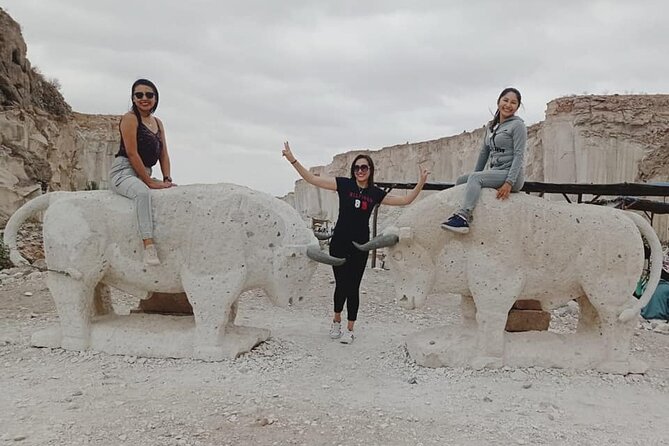
Set out on a thrilling adventure as you step into the world of stonecutters and witness the awe-inspiring Añashuayco Quarry. This is a must-visit destination for anyone looking for a unique tourist experience.
Located along the famous Route of the Sillar, this quarry isn’t only historically significant but also showcases the incredible stone cutting techniques employed by the skilled artisans.
As you explore the quarry, you’ll have the opportunity to see the Megatallado of the Church of the Society of Jesus, a massive stone carving that will leave you in awe.
But it doesn’t stop there – stonecutters at the Añashuayco Quarry will be happy to explain their daily work and even let you try your hand at cutting stone blocks.
It’s an immersive experience that will transport you back in time and give you a newfound appreciation for the artistry and skill involved in stone cutting.
Exploring the Megatallado of the Church of the Society of Jesus
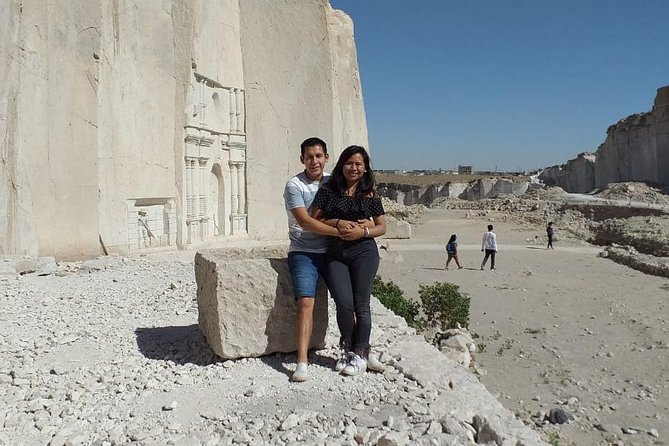
As you explore the captivating world of stone cutting along the Route of the Sillar, prepare to be enthralled by the magnificent Megatallado of the Church of the Society of Jesus.
This impressive stone carving showcases the remarkable craftsmanship and cultural symbolism of the local stonecutters. The Megatallado is a testament to the intricate stonecutting techniques that have been passed down through generations.
As you explore this masterpiece, you’ll gain a deeper understanding of the artistry and skill required to shape the sillar into elaborate designs. The Megatallado isn’t only a visual marvel, but it also tells a story of the region’s rich history and traditions.
It’s a must-see attraction for anyone seeking an adventure into the world of stonecutting and a deeper appreciation for the cultural heritage of the area.
Stonecutters and Their Daily Work
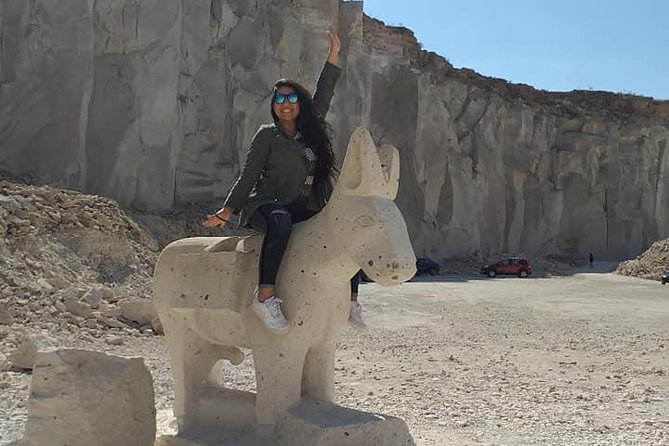
Every day, the skilled stonecutters of the Route of the Sillar embark on a journey of creativity and precision as they shape the raw blocks of sillar into works of art.
These stonecutters have honed their techniques over years of practice, mastering the art of chiseling, carving, and polishing the white volcanic rock. They use a variety of tools, including hammers, chisels, and saws, to carefully shape the stone into intricate designs and patterns.
However, their work isn’t without its challenges. Stonecutting requires immense physical strength and endurance, as well as a keen eye for detail. The stonecutters must navigate the natural imperfections and irregularities of the stone, overcoming obstacles and adapting their techniques to ensure a flawless finished product.
It’s a demanding and rewarding craft that showcases the talent and dedication of these skilled artisans.
Petroglyphs of Culebrillas in Quebrada De Culebrillas
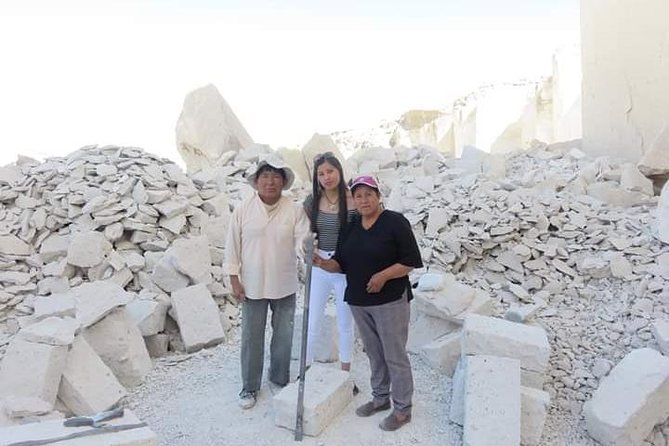
The journey continues from the skilled stonecutters of the Route of the Sillar to the captivating Petroglyphs of Culebrillas in Quebrada De Culebrillas, where ancient artwork and natural wonders await.
These petroglyphs hold immense significance as they offer a glimpse into the rich history and culture of the Wari civilization that thrived over a thousand years ago. Carved into the rocks, these intricate designs depict various animals, humans, and symbols, providing valuable insights into the beliefs and daily life of the people who created them.
The preservation of these petroglyphs is crucial in safeguarding our cultural heritage, as they serve as a tangible link to our past. Exploring this site isn’t only an adventure into the beauty of nature but also a journey through time, connecting us to the ancient civilizations that once inhabited these lands.
Walking Through the Small Canyon
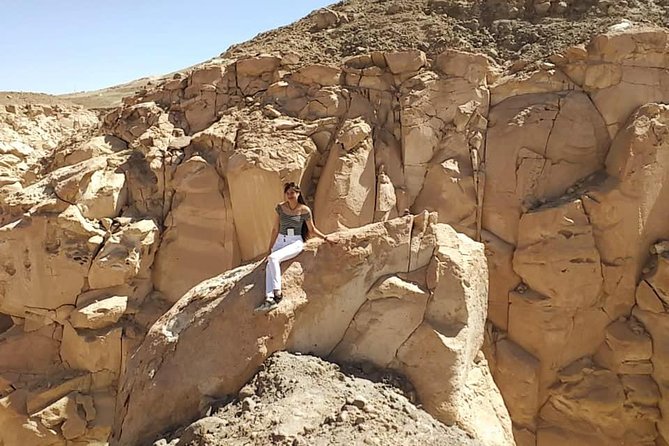
Embark on an exhilarating journey through time as you venture into the small canyon, enjoying the awe-inspiring beauty and ancient wonders of the Petroglyphs of Culebrillas.
As you walk through the canyon, you’ll have the opportunity to interact with local stonecutters, who can share their knowledge and expertise. They can explain the intricate process of cutting stone blocks and you can even try your hand at it.
As you continue your exploration, you’ll come across the significance of Apachetas, stone formations symbolizing gratitude and good luck. These Apachetas add a mystical element to the canyon, further enhancing the experience.
The walls of the canyon gradually increase in height, creating a sense of wonder and intrigue. Each step brings you closer to the rich history and cultural significance of this remarkable place.
The Ancient Wari Culture and Their Petroglyphs
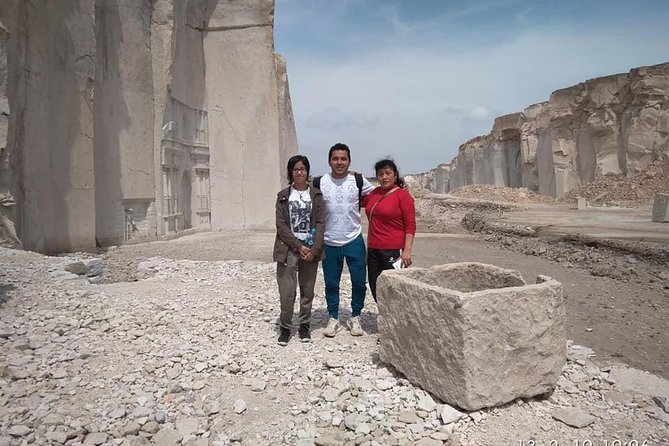
As you step deeper into the small canyon, the ancient wonders of the Petroglyphs of Culebrillas reveal the captivating story of the enigmatic Wari culture and their extraordinary petroglyphs.
The significance of the Wari culture can’t be understated, as they were one of the most influential civilizations in the Andean region from 500 to 1000 AD.
The petroglyphs left behind by the Wari people serve as a window into their beliefs, customs, and way of life. These intricate rock carvings depict a variety of subjects, including animals, humans, and geometric patterns.
Interpreting these petroglyphs allows us to gain insight into the spiritual and cultural practices of the Wari people.
Their petroglyphs provide a glimpse into a civilization that thrived long ago, leaving behind a lasting legacy etched in stone.
Return Trip and Cancellation Policy
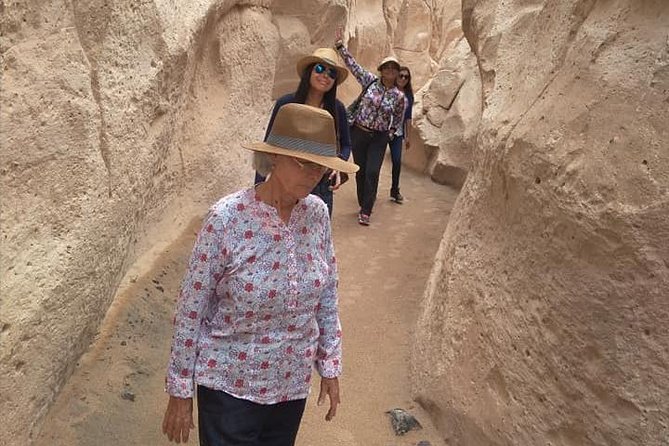
For a seamless and worry-free return journey, rest assured that our experienced guides will ensure your safe and timely arrival back to the center of Arequipa. With our convenient pick-up times from hotels located in the center of Arequipa between 08:00 am to 08:30 am, you can start your day exploring the Route of the Sillar and Petroglyphs of Culebrillas with peace of mind.
Cancellation Policy:
- Enjoy the flexibility of a full refund if you cancel up to 24 hours in advance.
- Unfortunately, if you cancel less than 24 hours before the start time, no refund will be available.
- Please note that changes made less than 24 hours before the start time won’t be accepted.
We understand that unforeseen circumstances may arise, but we kindly ask for your understanding regarding the refund policy. Our aim is to provide you with an unforgettable experience, and we appreciate your cooperation.
Common Questions
What Is the Significance of the Route of the Sillar and Petroglyphs of Culebrillas?
The significance of the Route of the Sillar and Petroglyphs of Culebrillas lies in its cultural importance. The route offers a glimpse into the history and craftsmanship of the stonecutters, while the petroglyphs showcase the ancient artistry of the Wari culture.
How Long Does It Take to Walk Through the Small Canyon in Quebrada De Culebrillas?
The walk through Culebrillas canyon offers stunning scenic views and takes approximately 20 minutes. Travelers will be captivated by the towering walls of the canyon as they explore the ancient petroglyphs created by the Wari culture over a thousand years ago.
What Are Apachetas and Why Are They Significant at the Petroglyphs of Culebrillas?
Apachetas are stone formations symbolizing gratitude and good luck. They hold significance at the Petroglyphs of Culebrillas, where they can be observed. These ancient cultural markers add an adventurous and mystical element to the experience.
Can Visitors Take Photos During the Experience?
Visitors on the Route of the Sillar and Petroglyphs of Culebrillas are allowed to take photos during the experience. However, there may be some photography restrictions in certain areas to preserve the historical and cultural significance.
What Is the Price Range for the Route of the Sillar and Petroglyphs of Culebrillas Experience?
The price range for the experience includes options starting from £16.02. Accessibility to the location is convenient, with pick-ups from hotels in the center of Arequipa. Embark on an adventurous journey through history and culture.
The Sum Up
To sum it up, the Route of the Sillar and Petroglyphs of Culebrillas is a truly remarkable journey that offers a unique blend of history, culture, and natural beauty.
From witnessing the stonecutters at work in the Añashuayco Quarry to exploring the ancient petroglyphs of the Wari culture, every step of this adventure is filled with awe and wonder.
So, embark on this unforgettable experience and discover the fascinating origins of sillar while enjoying the rich history of Arequipa.
More Tour Reviews in Arequipa
Looking for something different? Other Arequipa activities we've written about
- 6 Best Shopping Tours In Arequipa
- 8 Best Workshops And Classes In Arequipa
- 19 Best 3 Day Tours In Arequipa
- 25 Best Tours In Arequipa
- 20 Best 2 Day Tours In Arequipa
- 5 Best 4 Day Tours In Arequipa
- 20 Best Private Driver Services In Arequipa
- Best Drinking Tours In Arequipa
- 5 Best 3 Hour Tours and Experiences in Arequipa
- 10 Best Guided Tours In Arequipa
- 17 Best City Tours In Arequipa
- 2 Best Spa And Hot Springs Experiences In Arequipa
